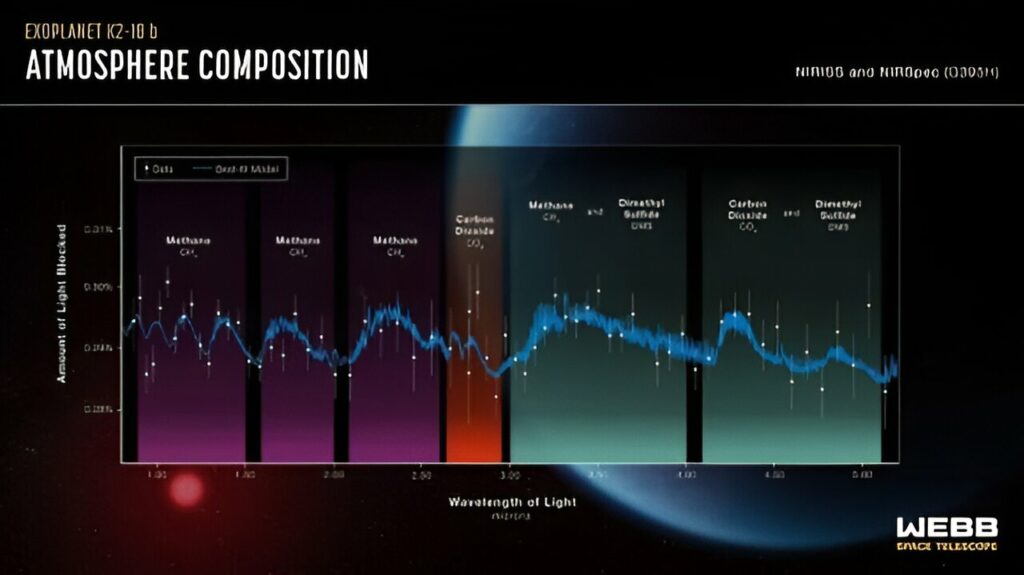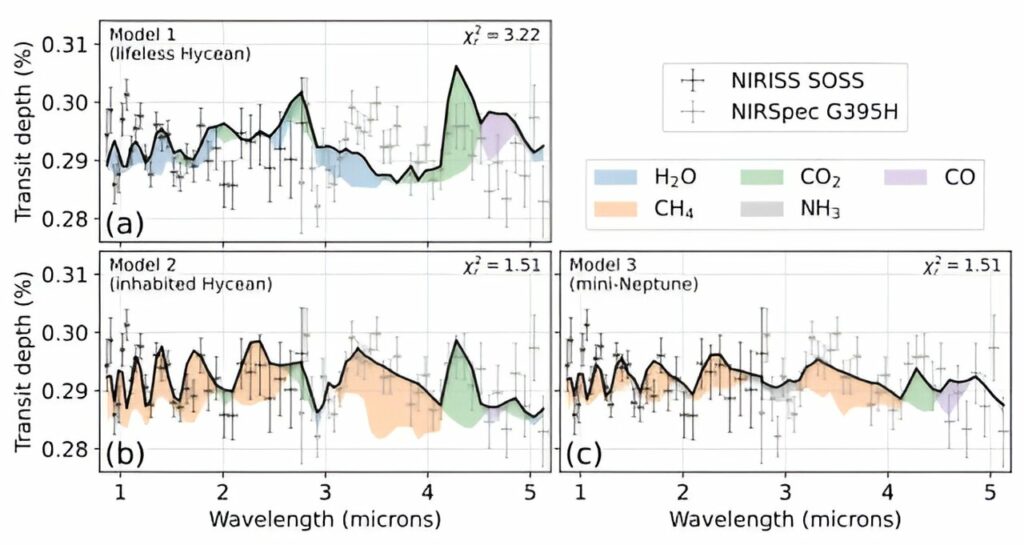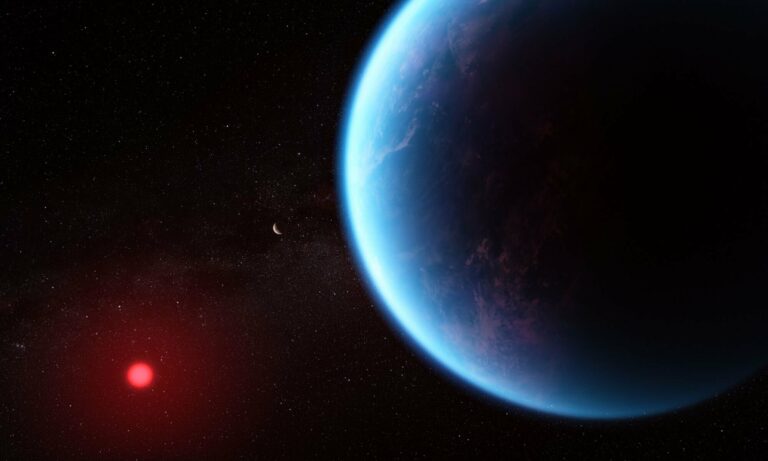An Alternative Interpretation for K2-18b: A Mini-Neptune Enriched with Gas and Devoid of a Habitable Surface
K2-18b, an exoplanet located approximately 134 light-years away, has been receiving significant attention due to recent findings from the James Webb Space Telescope. Spectroscopy conducted by the telescope has revealed the presence of carbon and methane in the planet’s atmosphere. These results, combined with other observations, have led to the hypothesis that K2-18b could potentially be classified as a “Hycean World,” a concept that has long been speculated. However, new research challenges this notion and suggests that the planet may actually be a gaseous mini-Neptune.
With a radius approximately 2.6 times that of Earth and a mass around 8.6 times that of our planet, K2-18b resides within the habitable zone of a red dwarf star. Despite its close proximity to its star, with an orbital period of only 33 days, the planet receives a similar amount of energy as Earth does from the sun, due to the dim nature of the red dwarf.
Scientists are currently grappling with the puzzle of determining the density and composition of K2-18b. Its density falls between that of Earth and Neptune, indicating that it is neither predominantly rocky like Earth nor entirely gaseous like Neptune. This has led to speculation that K2-18b may be an ocean world, referred to as a hycean world. To ascertain the planet’s composition, scientists rely on studying its atmosphere.
This is precisely what the James Webb Space Telescope has done, revealing the presence of various chemicals, including CO2 and methane, while notably lacking in ammonia. However, further research is required to fully understand the nature of K2-18b.
Earlier this month, a group of scientists shared their research on the arXiv preprint server (Shorttle et al, 2024) based on the findings of the JWST. Through their analysis using climate atmosphere models, these researchers have come to the conclusion that K2-18b is most likely a world with a magma ocean. In their report, they state that the magma ocean model accurately replicates the current JWST spectrum of K2-18b, suggesting that it is a plausible explanation for the observed data, comparable to the possibility of the planet hosting a liquid water ocean.

However, there is another group of researchers who hold a different perspective. They do not believe that K2-18b is a hycean world or a lava world. These researchers have published a paper on arXiv titled “JWST observations of K2-18b can be explained by a gas-rich mini-Neptune with no habitable surface.” The lead author of this paper is Nicholas Wogan, a post-doctoral researcher in the Space Science Division at NASA’s Ames Research Center. Wogan’s areas of expertise include the early Earth, exoplanets, and astrobiology.
The discovery made by the JWST regarding the presence of methane (CH4) and carbon dioxide (CO2) in the atmosphere of K2-18b, along with the absence of ammonia, suggests that it is likely a hycean world with a dense hydrogen/helium atmosphere. However, the analysis conducted by Shorttle et al contradicts this notion, proposing that the results could also indicate a planet with a magma world.
In contrast, the recent study conducted by Wogan et al presents a different perspective. They argue in favor of the mini-Neptune interpretation, citing its simplicity and the fact that it does not require the existence of a biosphere or any unknown source of methane to explain the observed data.
To support their argument, the researchers employed photochemical and climate models to simulate various versions of K2-18b, including hycean worlds and a gas-rich mini-Neptune without a well-defined surface. Their findings indicate that the gas-rich mini-Neptune model aligns best with the available data.
Understanding the complexities of planetary atmospheres from a considerable distance is an immense challenge. Scientists not only need to identify the chemical composition of these atmospheres (thanks to the JWST), but they also need to comprehend the intricate processes occurring within them. Factors such as temperature and pressure significantly influence the observable characteristics and the hidden aspects of these atmospheres.
One intriguing aspect of K2-18b’s atmosphere is its supercriticality. A supercritical fluid exists above its critical point in terms of temperature and pressure. In this state, neither gas nor liquid phases are present, yet the pressure is insufficient to solidify the material. Jupiter and Saturn possess supercritical fluids deep within their atmospheres, and these fluids exhibit distinct behaviors compared to liquids or gases. This further adds to the complexity of the situation.

The complexity of climate models used by researchers was compared to the findings of the JWST on three modeled exoplanets: an uninhabitable hycean world, a habitable hycean world, and a gaseous mini-Neptune with no surface.
The authors of the study favor the interpretation of the gaseous mini-Neptune due to its relative simplicity and the fact that it does not require a biosphere or unknown source of methane to explain the data. They highlight the challenges faced by hycean worlds in maintaining a stable temperature and atmospheric methane levels without a biogenic or unknown source. Therefore, they discard the hycean hypothesis and suggest that the gaseous mini-Neptune scenario aligns better with the data and models.
The authors attribute the JWST’s findings to the planet’s deep atmosphere, explaining the presence of methane and carbon dioxide through “deep-atmosphere thermochemical quenching.” They also suggest that the absence of ammonia and carbon monoxide can be explained by deep atmosphere kinetics such as upwelling.
It is important to note that further analysis of the data will be conducted, and this study is not the final conclusion on K2-18b. As scientists continue to study and understand exoplanets, these results will contribute to the improvement of atmospheric and climate models. Eventually, scientists will be able to differentiate between different types of exoplanets.
But for now, they’re still figuring it out.
This article is republished from PhysORG under a Creative Commons license. Read the original article.
Do not forget to share your opinion with us to provide you with the best posts !





0 Comments